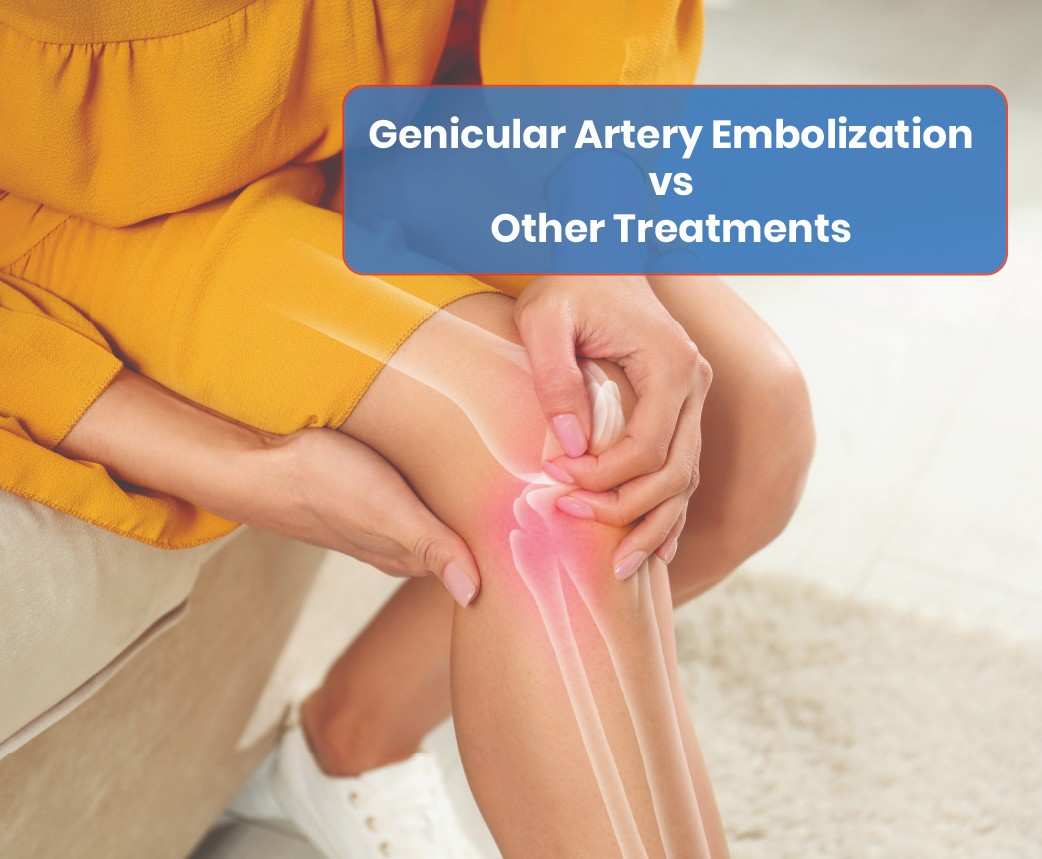The primary benefit of GAE is its minimally invasive nature. Unlike knee replacement surgery, which involves significant recovery time, GAE allows patients to return to their daily lives relatively quickly. Moreover, the reduction in knee pain can lead to improved mobility and a better quality of life. Many patients report significant pain relief within weeks of the procedure, with some experiencing long-lasting results.
Risks and Complications
As with any medical procedure, GAE carries some risks. Common risks include infection, bleeding, or an allergic reaction to the contrast dye used during the procedure. In rare cases, the embolization particles may travel to unintended areas, causing tissue damage. However, these risks are relatively low compared to more invasive surgeries, making GAE a safer alternative for many patients.
When compared to traditional knee treatments like surgery, corticosteroid injections, or physical therapy, GAE stands out for its unique approach and effectiveness. Surgery, while effective for many, comes with significant downtime and risks, whereas GAE offers a less invasive option with a quicker recovery. Corticosteroid injections, on the other hand, provide temporary relief but don’t address the underlying issue in the same way GAE does.
Effectiveness of Genicular Artery Embolization
Research on GAE has shown promising results, with many patients experiencing significant pain reduction and improved function after the procedure. Studies indicate that the benefits of GAE can last for several years, making it a durable option for chronic knee pain. Patient testimonials often highlight the life-changing nature of the procedure, with many able to return to activities they had previously given up due to knee pain.
Who Performs Genicular Artery Embolization?
GAE is performed by interventional radiologists—specialists trained in minimally invasive procedures using imaging guidance. These professionals undergo extensive training in vascular procedures and are skilled in navigating the body’s intricate network of arteries. When considering GAE, it’s essential to choose a specialist with experience in the procedure to ensure the best possible outcome.
Cost and Insurance Coverage
The cost of GAE can vary depending on the facility, the specialist, and the geographic location. However, it is generally more affordable than knee replacement surgery. Many insurance plans cover GAE. Patients are encouraged to check with their insurance providers beforehand to understand their coverage options. For those without insurance or with high out-of-pocket costs, some facilities offer payment plans or financial assistance.
Patient Preparation and Expectations
Before undergoing GAE, patients should have a clear understanding of what the procedure entails and what they can expect in terms of outcomes. It’s essential to have realistic expectations—while GAE can significantly reduce pain, it may not eliminate it entirely. Patients should also prepare mentally and physically, ensuring they follow all pre-procedure instructions and plan for a few days of rest afterward.
Recovery and Aftercare
Recovery from GAE is typically quick, with most patients resuming normal activities within a few days. However, it’s important to follow the aftercare instructions provided by the healthcare team. This may include avoiding strenuous activities, taking prescribed medications, and attending follow-up appointments. Long-term care may involve continued physical therapy, maintaining a healthy weight, and managing any underlying conditions that could affect knee health.
Frequently Asked Questions (FAQs) About GAE
1. Is Genicular Artery Embolization painful?
- The procedure is generally well-tolerated, with most patients reporting minimal discomfort.
2. How long does the procedure take?
- The actual procedure usually takes about 1-2 hours, but you should plan for several hours at the hospital, including preparation and recovery time.
3. Will I need to stay overnight in the hospital?
- Most patients go home the same day, but in rare cases, an overnight stay might be required.
4. How soon will I see results?
- Many patients begin to notice pain relief within a few weeks, with continued improvement over the following months.
5. Can GAE be repeated if necessary?
- Yes, GAE can be repeated if necessary, though many patients experience long-lasting relief from a single procedure.

